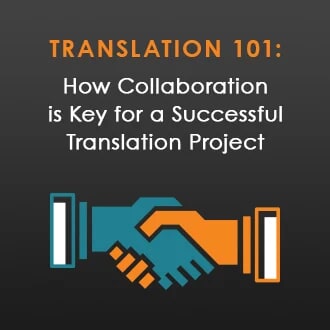All relationships are subject to change, even your company’s relationship with its translation provider. This is natural and the ability to change vendors should factor into your strategy of maintaining an effective translation/localization program that supports your company’s international customers.
Not dissimilar to private interpersonal relationships, there are red flags that your relationship with your current translation provider may not be working for you. Over time have the following become true for your translation provider?
- Response times to emails and receiving quotes have increased
- Willingness to “go the extra mile” to meet rush requests is absent
- You have not had any engagement with an account manager or project manager outside of a running project in over six months
- Your company does not receive regular deliveries of translation memories and terminology databases
- There is no follow-up on resolving client review changes
- Deadlines are not consistently being met
- Requests by your company to improve communication, process, efficiency, costs are met with vague responses and no follow-up
The bottom line when it comes to your relationship with your translation partner—are you confident and enthusiastic about engaging them about your company’s translation needs or is it a chore that leaves you anxious about the outcome? Do not settle for a working relationship that just limps along. You should expect a high degree of performance and attention from your provider. If your company is not getting that, it may be time to move on.
Things to Consider Before the Break-up
Leaving your current translation provider is not as easy as simply writing a “Dear John” email. Before breaking up, make sure that you have taken ownership of your company’s language assets.
- Translation memories
- Terminology databases and/or glossaries
- Translation style guides
- SRX file (custom translation memory segmentation files—if such were created)
Regarding the breaking up conversation, it is courteous to give your vendor an opportunity to correct what they have done wrong. However, if the relationship has already reached the point of no return, then schedule a final meeting during which you make clear that you require all language assets before settling your company’s account with them. Ensure too that all project deliveries have been completed and that there is no outstanding work in progress.
One way in which business relationships differ from personal ones—you may not want to make the change until you have another vendor approved and ready to support your company’s needs. You do not want to have to rush to onboard a new translation provider, in fact, you should engage a new vendor well before you have given your current vendor its walking papers. Ideally, you can have them start work before you cut ties with your current vendor.
Be sure to use your experience with the outgoing vendor to inform what you expect of your new translation vendor. What practices of your ex did you not appreciate? What did they get right? This information will help you build a much stronger relationship with your new vendor. Also, show them all the language assets you have in your archives. This will give them a chance at assessing your prior vendor’s performance and be able to focus on improvements that can be made.
Ensure that your new vendor is in the position to give your company the attention it needs. Tell them how you like communication to work during active projects. Just like any personal relationship, business relationships must be based on open communication, fairness, and mutual respect. With a solid translation provider as your company’s partner, your organization will be able to support and pursue international customers with confidence and continue building that all-important global footprint.If you are looking for a new translation provider, request a free quote on our website.










